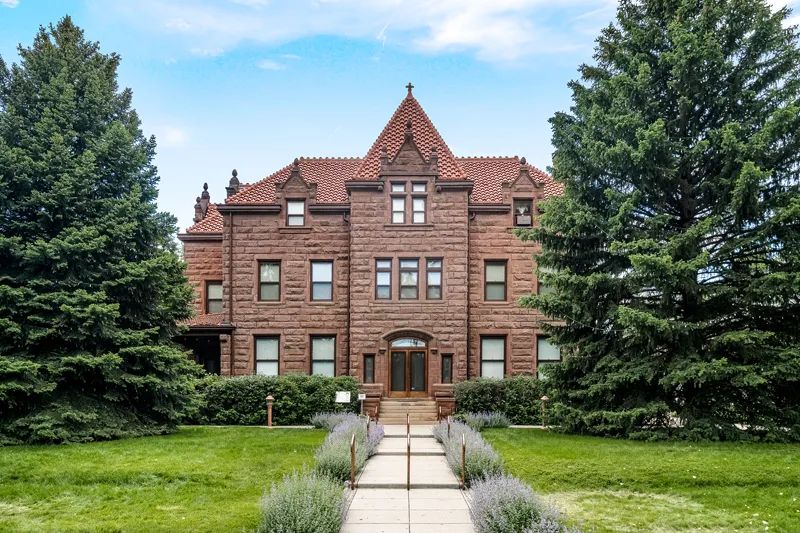
Memories of the Moss
As this Billings treasure turns 125, the last remaining family member has memories of her own
Set back on manicured grounds and flanked by two enormous evergreen trees, the stately three-story red brick mansion with its large windows has been a landmark on downtown Billings’ Division Street for well over a century.
With traffic rushing by, it’s hard to imagine that the Moss Mansion was built on the far west side of the city, away from any developed property and with an unobstructed view of the Rims, the Beartooth Mountains and the South Hills. One of Billings’ finest treasures, the Moss Mansion, built in 1903, takes visitors back to the turn of the 20th century, where they also learn the history of the lives of the Moss family.
The mansion’s owners played a key role in the development of Billings. The legacy of the man who built the home, Preston Boyd (P.B.) Moss lives on in many ways. P.B. was an astute businessman with a long list of accomplishments. His background was in banking, yet he developed a power company to bring electricity to town. He also founded the first newspaper and built the Northern Hotel. He was instrumental in developing an irrigation system for farmers in the community and helped start Billings Polytechnic Institute, which later became Rocky Mountain College. He also invested in a couple of ranches and started a meatpacking plant. In his lifetime, P.B. was involved in more than 80 businesses.
His wife, Mattie, a college graduate, accomplished musician, artist, gardener and the mother of six children, was involved in many facets in the community. Beloved by her neighbors and considered a tremendous hostess, she was such a devoted and engaged mother that her children nicknamed her “Fun.” Much of the artistic flair in the mansion can be traced to Mattie.
While this family was looked upon with honor and esteem, to one little girl, they were just “Grampa” and “Gramma.”
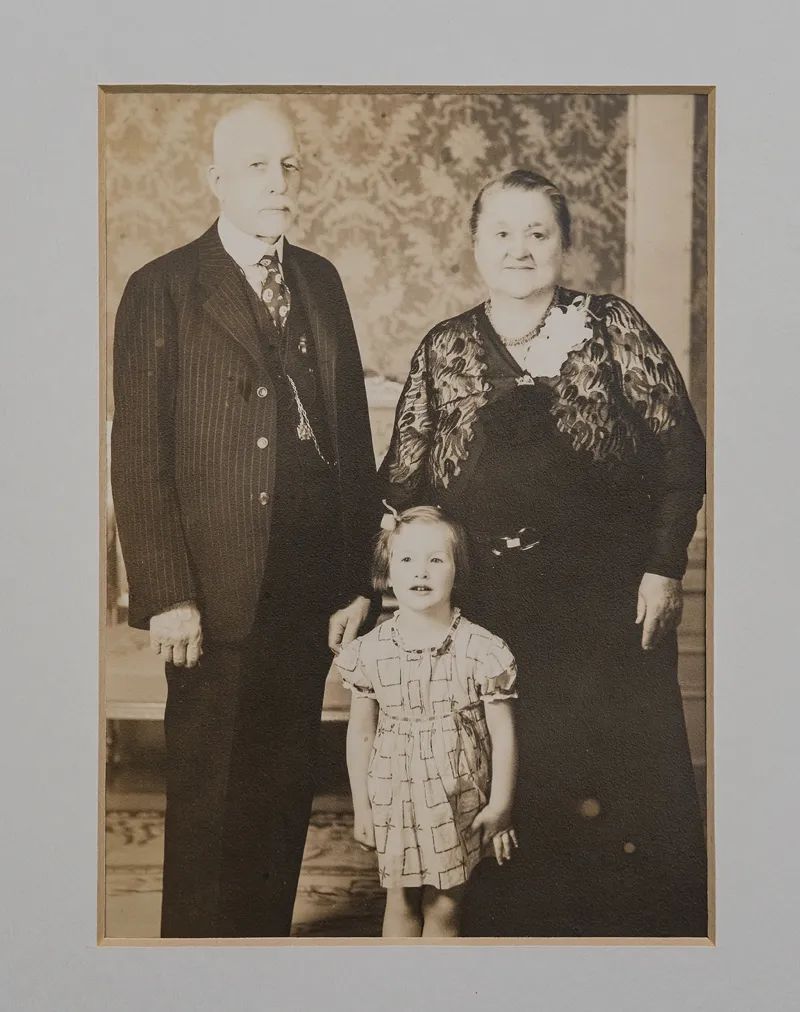
As a child, Marilyn Moss Castleman’s fondest memories of visiting her grandparents’ home were Thanksgiving dinners in the formal dining room. The table was set to perfection with beautiful China and glassware. The family around it was just as impeccable, with everyone in their finest before sitting around the table.
The conservatory and the parlor were the favorite spaces. Marilyn remembers the sitting room as being the spot where the family shared conversation or enjoyed the sounds coming from the grand piano or from her aunt’s harp.
“I have very fond memories of my grandparents’ home,” Marilyn, 87, says. “It was a lovely place for me to visit. I loved both of my grandparents, but it was my aunts Melville and Kula that I felt the closest to.”
Marilyn’s father was David Moss, the youngest of the six Moss children, and Marilyn is the last surviving descendant of the Moss family. She’s only one of two grandchildren born to P.B. and Mattie.
Now residing in Arizona, Marilyn tries to make it back to visit every few years and is grateful that the mansion is not only a beloved Billings landmark but is listed on the National Register of Historic Places.
Over the past 120 years, the home has withstood the urban sprawl built around it in all directions. Now located in the center of town, it is open year-round for events and tours.
According to Aly Turner, the director of the Moss Mansion, there are public events almost weekly for most of the year. June starts off with one of the biggest fundraisers, Springfest, and other events dot the calendar every month.
“We have so many things for families to enjoy here,” Aly says. “It’s hard to take it all in with one visit.”
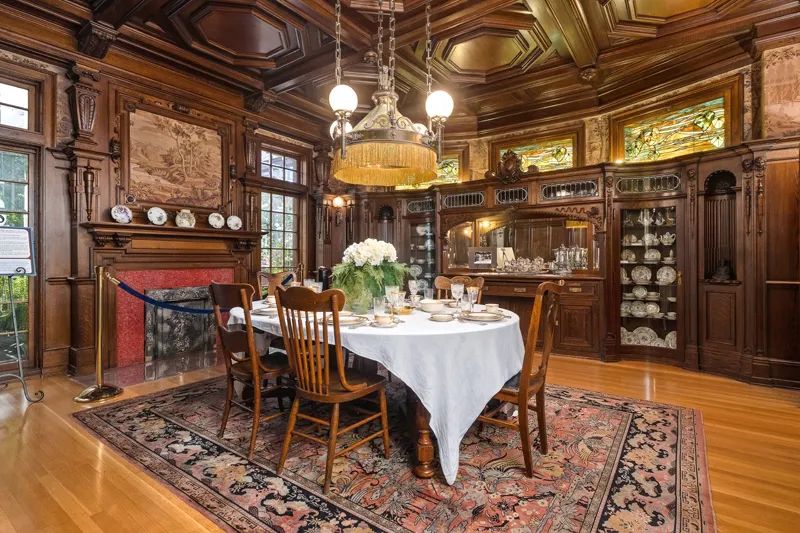
Aly has worked at the mansion for seven years and is proud of the many ways in which the Moss family contributed to the community of Yellowstone County.
“For example, the sugar beet factory,” she says. “P.B. and a couple of others started it. Immigrants came to work in the factory and ended up staying, some families for generations. The influence P.B. had in the lives of families is so far-reaching, it’s astounding.”
The Moss Mansion is owned jointly by the city of Billings and the state of Montana but remains totally self-sustaining and raises its own money for the $400,000 yearly budget through events and tours.
“We have wonderful community support,” Aly adds. “And our staff and volunteers are extraordinary. We couldn’t do what we do without them.”
Walking around this historic home, you see the incredible preservation. It proudly displays all the original wall coverings, light fixtures, window coverings and much of the furniture. Though typical house repairs have been necessary over the decades, a concerted effort has been made to stay as close to original materials as possible.
“Aunt Melville never wanted to update the furnishings,” Marilyn says. “She might have been eccentric but in the end, it was an incredible thing that she did.”
Visitors are invited to experience the beauty, detail and function of the home, and with photos and plaques of the family’s history on display, a clear vision is set of how the occupants lived throughout the massive home. It was luxury at its finest.
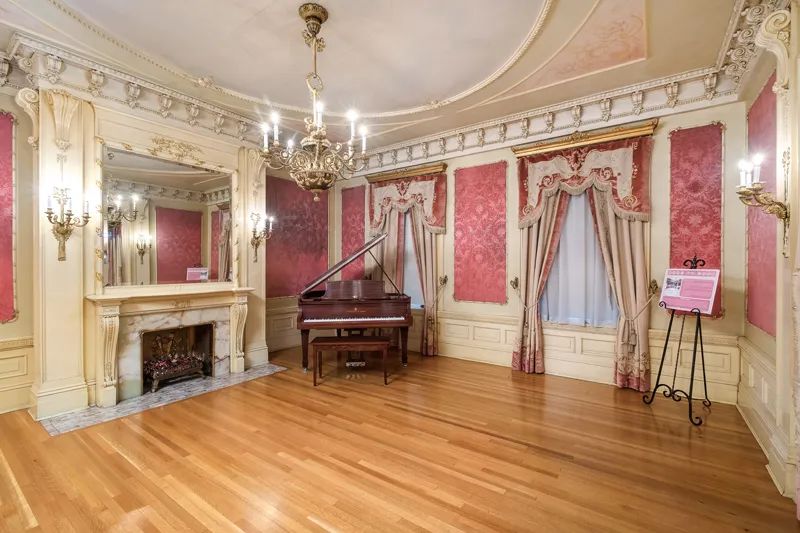
After the death of Kula’s son at the age of 7, Marilyn became the only living grandchild of P.B. and Mattie. She remembers having to be on her best behavior with each visit. “Everything was very formal,” she says. “I loved it, but without children my age, I didn’t play there often.”
Her love of gardening, she believes, came from her time spent in the conservatory with her grandmother, and contributed to her lifelong hobby.
“The conservatory was so special,” she remembers. “Gramma had it filled with beautiful, colorful flowers all year round.”
Marilyn remembers the parlor with admiration because of the architecture, furnishings and décor of the stately room.
“My grandfather’s funeral was held there,” she says. “It was such a handsome room, but I was only 11 when he died, and it was really hard for me.”
In 1984, her aunt Melville, who lived in the home most of her life and never married, gifted the mansion to Marilyn and two sisters-in-law. Two years later, it was purchased by the Billings Preservation Society and then donated to the city and the state of Montana.
A beautiful set of China graces the dining room table, a gift from Marilyn, who had inherited the 100-year-old set from Kula and recently gifted it back to the mansion. Though unable to visit often, she still enjoys keeping up with the changes and activities taking place.
“I’m proud that what my grandparents built has been preserved and shared with the public for all these years,” she says.
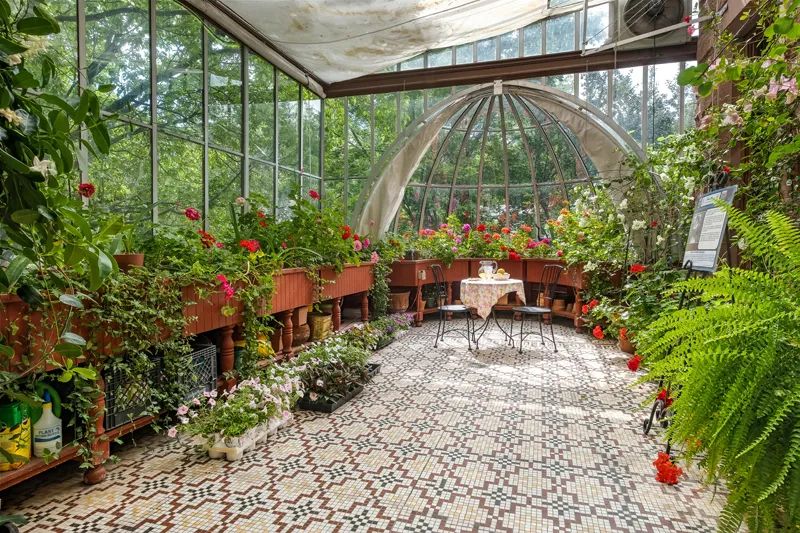
FOR MORE ON THE MOSS MANSION & ITS HAPPENINGS, visit mossmansion.com. The mansion is open during the summer daily except Tuesdays from 12 p.m. to 3 p.m.
Did you know?
More than 8,000 visitors tour the Moss Mansion each year
Did you know?
The purchase price of the Mansion in 1986 was $450,000. Owned by the city of Billings, the state of Montana and leased to the Billings Preservation Society, the purpose of the museum is to “to preserve, collect, describe, interpret, and exhibit artifacts and documents relating to the home. Its long-range goal is to restore the building, the grounds and furnishings to their original condition for the education and enjoyment of the public and future generations.”
Did you know?
The Moss Mansion employs 12 people and requires upwards of 40 volunteers annually for its tours and events.











